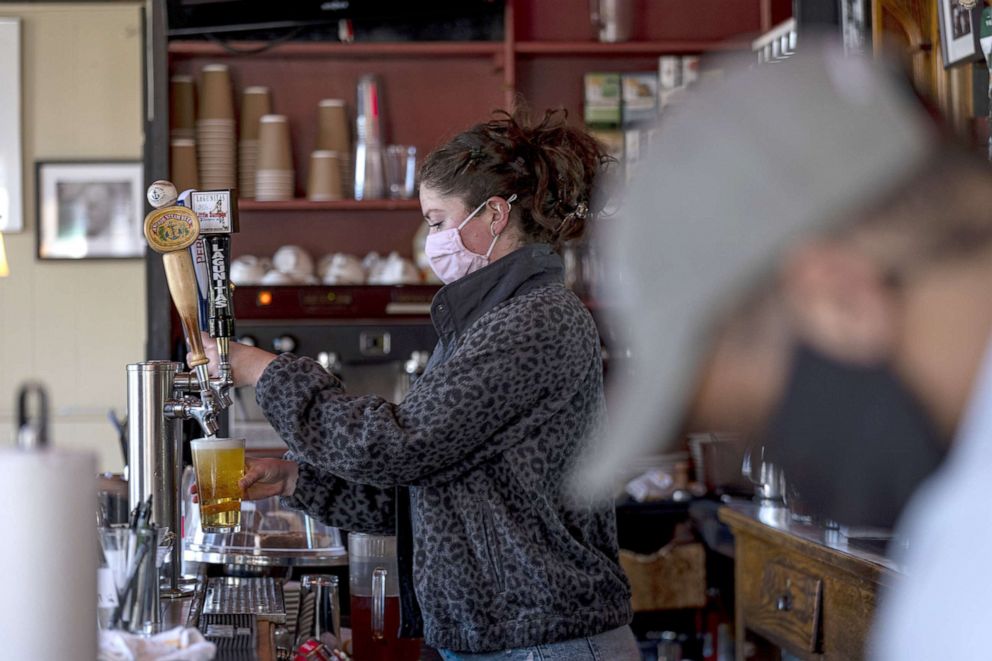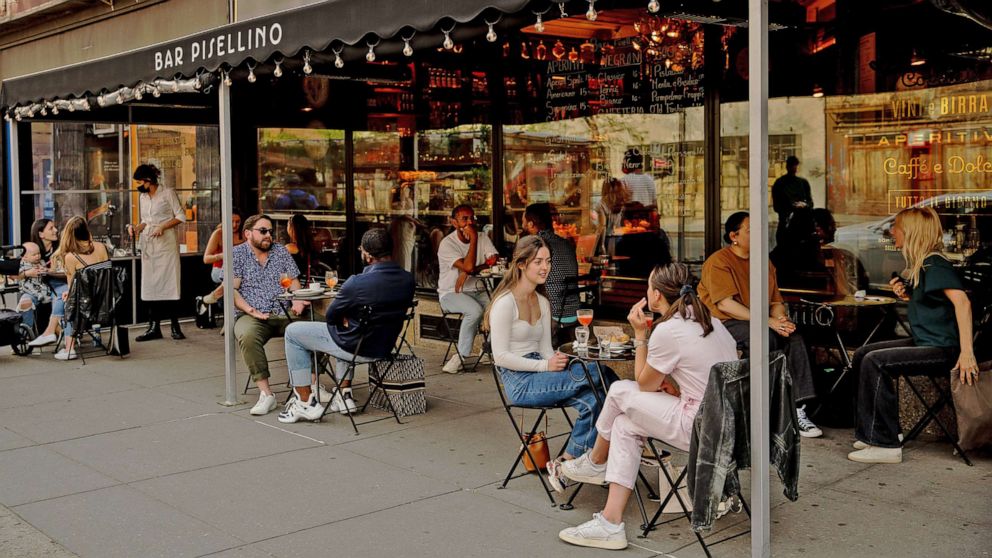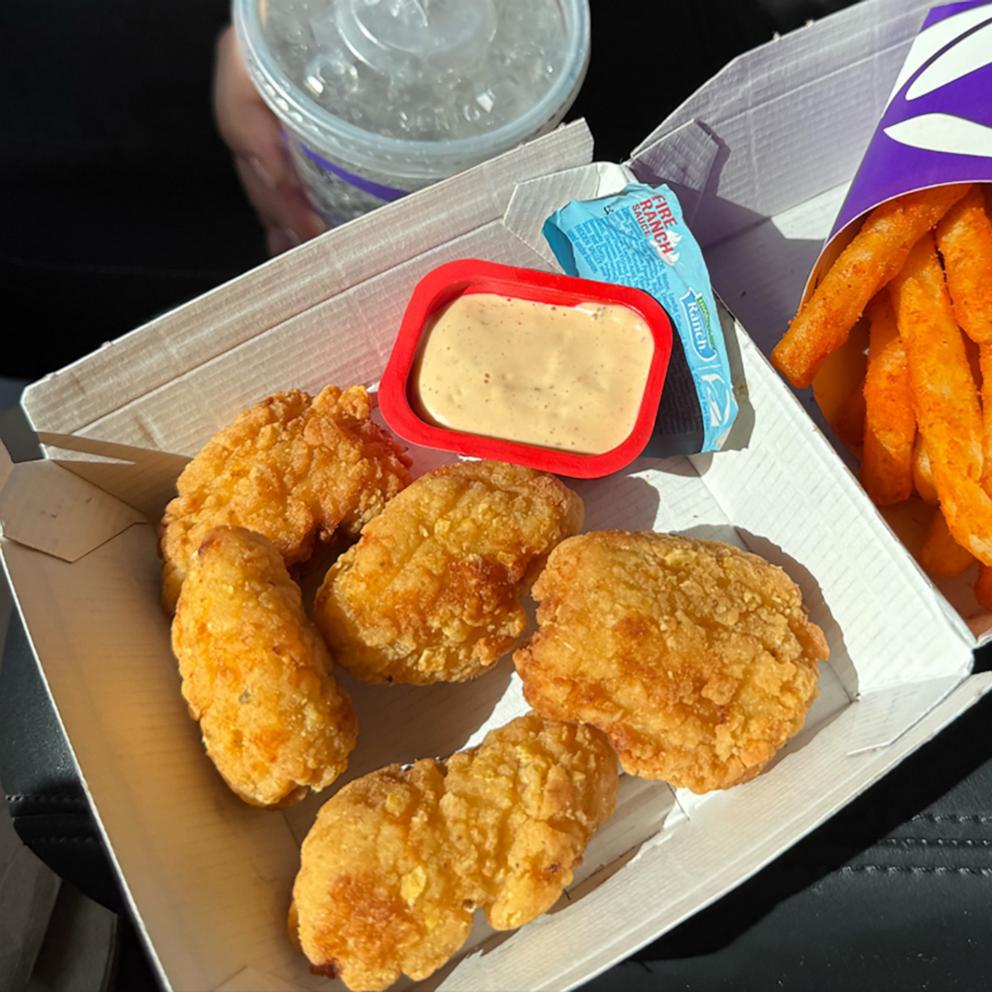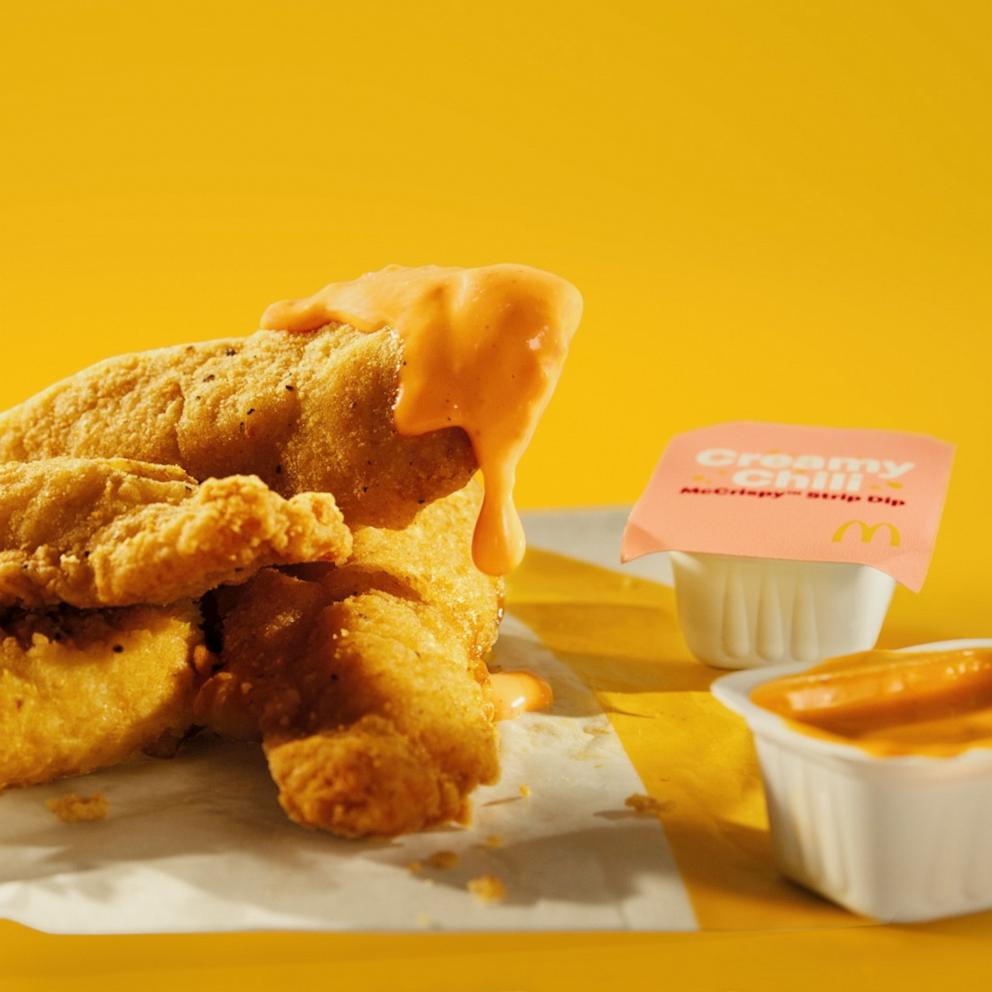What the new CDC mask guidance means for dining out if you're vaccinated

The news that the Centers for Disease Control amended its COVID-19 mask guidance for people who are fully vaccinated has raised new questions about what this means for patrons at bars and restaurants.
The agency said Thursday that "fully vaccinated people no longer need to wear a mask or physically distance in any setting, except where required by federal, state, local, tribal, or territorial laws, rules, and regulations, including local business and workplace guidance."
While there was no succinct or defined set of recommendations specific to bars and restaurants, industry leaders have responded to what this new guidance means.
The National Restaurant Association told "Good Morning America" that while the updated CDC guidance is an encouraging step, "the Association won't be immediately updating its COVID-19 Operating Guidance."

"The announcement by the CDC that fully vaccinated people no longer need to wear masks indoors or outdoors means that restaurant operators have the option of determining how best to enforce the new guidance," Larry Lynch, the SVP of Science and Industry for the National Restaurant Association, said. "Because restaurants welcome people who are both vaccinated and not fully vaccinated, operators will still need to work with their state and local regulators to ensure they are in line with all other mandates in place."
He added, "The restaurant industry has always placed a focus on the health and safety of our workforce and our customers, so we are encouraged by the CDC’s decision and the potential it has to help move the restaurant industry closer to being fully reopened in all communities where the virus is not an immediate threat."
Read a full list of public health guidance around other activities and masks from the CDC here.

As cities across the U.S. continue to work to safely reopen and loosen restrictions like capacity limits and curfews, major industry capitals like New York are on the brink of a full reopening.
Eateries in the Big Apple will be able to reopen to 100% beginning Wednesday, May 19, Gov. Andrew Cuomo announced earlier this month. Thanks to the increased vaccination rates, which Cuomo cited as a key indicator for loosening those restrictions, restaurants and bars in the city can also resume normal operating hours starting May 17 for outdoor dining and May 31 inside.
Bar and restaurant owners in other parts of the country hard-hit by limitations due to the pandemic are still facing limitations.
In Los Angeles County, indoor dining is restricted to operating with a maximum of 50% occupancy, according to the Department of Public Health.
The latest move from the CDC was an about-face from guidance issued just 16 days prior when the agency suggested masks should still be used indoors or in crowds even if people are fully immunized, which is defined as two weeks after the final shot.
CDC Director Rochelle Walensky faced criticism for the CDC being too slow to provide a path back to normalcy for fully vaccinated people, over 117 million of whom are in the U.S. Walensky has defended the CDC's approach as scientifically-based to ensure protection not just for individuals but also the entire U.S. population. The majority of the American population remains unvaccinated.
Some restaurant owners hope that the news will prompt changes at the state, and local districts and several states -- including Connecticut, Illinois, Kentucky, Nevada and Pennsylvania -- lifted their mask mandates following the update from the CDC.
At the same time, mask enforcement for non-vaccinated people will be challenging and is likely to renew the debate over "vaccine passports," which some states have banned.
"With regard to what businesses, communities, schools we, of course, will be updating our guidance in many of these areas very shortly," Walensky said Thursday, but urged local public health departments to make the call in each community based on how many people are vaccinated and how many cases are in the area.
ABC News' Cheyenne Haslett andAnne Flaherty contributed to this report.




